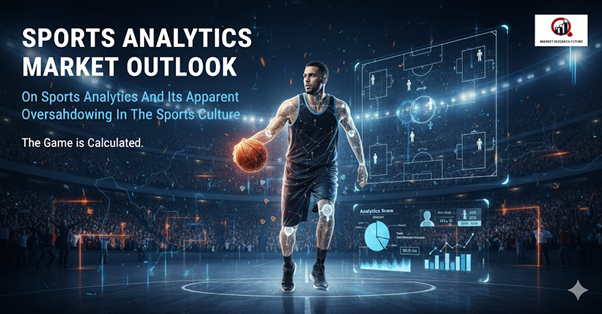Sports Analytics Market Outlook on Sports Analytics and its Apparent Overshadowing in the Sports Culture

Sports Analytics Market
Sports have become more data-driven, which elevates the demand for sports analytics. Owing to the rising popularity of data analytics in sports, the size of the worldwide sports analytics market will reach USD 26.48 billion with a proliferating CAGR of 25.33% through 2035. The valuation of the sector in 2024 was USD 2.21 billion.
The demand for sports analytics is anticipated to rise as on-field data becomes increasingly crucial for analyzing team performance, tracking individual players, monitoring injuries, and optimizing training regimens.
To prepare strategies, select teams, and finalize starting lineups, management now compares both off-field and on-field data of individual players. Managers’ growing reliance on real-time data to plan training sessions and create tactical strategies is expected to drive market growth.
Sports analytics growth is being fueled by the changing dynamics of sports and the rapid adoption of new technologies. The increasing demand for cloud-based software solutions, offering scalability, affordability, easy access, and uninterrupted service, is further propelling this shift.
Superclubs with a long history of success have leveraged data analytics to strengthen their global fan base, enhance brand value, attract top talent, and secure higher sponsorships and investments.
The growing competition, need for informed decision-making, and influence of social media have further accelerated the adoption of sports analytics. Additionally, partnerships between clubs, teams, and analytics organizations have become common, enabling better insights and performance improvements.
During the forecast period, the sports technology market is expected to expand significantly due to changing sports dynamics and increasing use of analytics in athletic performance.
Top associations and teams across multiple sports have already implemented analytical systems and hired expert analysts to enhance both team and individual performance. Analytical tools are also being used to evaluate fan engagement, monitor player health, and measure overall performance.
The growing adoption of advanced sports technologies to gain quantitative insights for improving game performance, combined with the rising preference among coaches and managers for real-time data, will continue to contribute to market expansion.
Increasing investments by sports organizations in data-driven decision-making, from player recruitment to fan engagement, are expected to further boost demand. The rise of wearable technologies, human performance labs, and the growing sports betting ecosystem are additional factors supporting this trend.
Challenges in the Sports Analytics Market
A lack of understanding regarding the advantages of sports analytics and difficulties in integrating data from different sources may hinder market growth.
While North America and Europe continue to experience strong demand for technologies such as big data analytics, AI, and ML, other regions face barriers due to limited technological penetration and restrictive regulations.
Many sports organizations still rely on traditional methods of analysis, hiring former athletes to help assess team health and performance.
However, as data-driven strategies prove increasingly effective in improving outcomes, more organizations are recognizing the importance of extracting value from data to make smarter business and sporting decisions.
Market Growth Accelerated by Digitization
Rapid digitization has had a positive effect on the sports analytics market, especially during and after the COVID-19 pandemic. The pandemic accelerated technology adoption across the sports sector, pushing organizations toward AI-driven operations and remote data monitoring.
As software development and analytics solutions advanced, they enabled athletes and teams worldwide to benefit from real-time insights and performance improvements. One of the persistent challenges, however, remains the lack of awareness of the benefits of sports analytics and the relatively high cost of implementing such solutions.